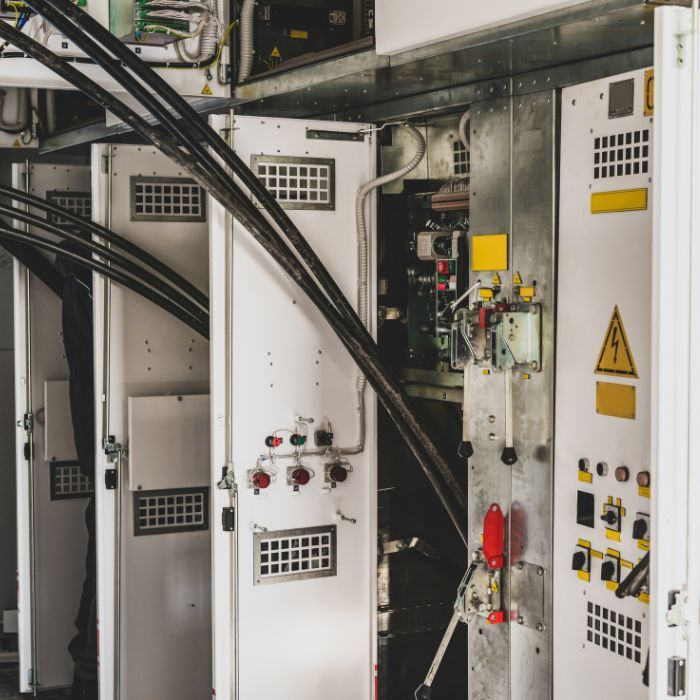6T- Key Aspects of High Voltage Industrial Network Design
Key Aspects of High Voltage Industrial Network Design
In “Key Aspects of High Voltage Industrial Network Design” course, you'll learn...
- -Needs and main constraints to be met
- -Constraints linked to the industrial process
- -Constraints linked to the electrical process
- -Constraints imposed by the utility electrical power distribution network
- -Main rules of industrial network design
- -Reactive power compensation
- -Backup and replacement sources
- -Autonomous electrical energy production
- -Choice of the earthing system
- -Insulation coordination analysis
- -Protection system definition
- -Choice of motor starting method
- -Network dynamic stability
- -Choice of optimal network structure and operation
- -Standard network structures
Overview Faced with increasingly furious competition, manufacturers need to enforce highly rigorous management and their manufacturing facilities need to be highly available. Electrical networks provide the energy needed to operate the production facilities. The provision of an uninterrupted power supply to loads is strived for from the start of the network design, especially during preliminary design of the single line diagram. Reductions in electrical installation and operating costs, together with reliable uninterrupted operation, are key profitability conditions. This technical and economic optimization asks for comprehensive preliminary assessment that includes:
-Specific requirements and constraints related to the industry type,
-Integration of the limits and constraints of the public distribution network,
-Standards and local regulations,
-Particularities of the operating staff, facilities manager and maintenance staff.
The scope of this course is limited to the assessment involved in the design of High Voltage (HV) high power industrial networks which have the following main characteristics:
-Total capacity in the 10 MVA range,
-Autonomous electrical energy generation,
-Power supplied by a national transmission or distribution network,
-Private Medium Voltage (MV) electrical distribution
This course is suitable for electrical engineers with a desire to understand the fundamentals of designing high voltage industrial network electrical systems. Course includes details about various system constraints, reactive power compensation, autonomous power production, choice of the grounding system, insulation coordination analysis etc. Upon successful completion engineers will be able to understand and consider important aspects when designing high voltage industrial networks.
Key Aspects of High Voltage Industrial Network Design
In “Key Aspects of High Voltage Industrial Network Design” course, you'll learn...
- -Needs and main constraints to be met
- -Constraints linked to the industrial process
- -Constraints linked to the electrical process
- -Constraints imposed by the utility electrical power distribution network
- -Main rules of industrial network design
- -Reactive power compensation
- -Backup and replacement sources
- -Autonomous electrical energy production
- -Choice of the earthing system
- -Insulation coordination analysis
- -Protection system definition
- -Choice of motor starting method
- -Network dynamic stability
- -Choice of optimal network structure and operation
- -Standard network structures
Overview Faced with increasingly furious competition, manufacturers need to enforce highly rigorous management and their manufacturing facilities need to be highly available. Electrical networks provide the energy needed to operate the production facilities. The provision of an uninterrupted power supply to loads is strived for from the start of the network design, especially during preliminary design of the single line diagram. Reductions in electrical installation and operating costs, together with reliable uninterrupted operation, are key profitability conditions. This technical and economic optimization asks for comprehensive preliminary assessment that includes:
-Specific requirements and constraints related to the industry type,
-Integration of the limits and constraints of the public distribution network,
-Standards and local regulations,
-Particularities of the operating staff, facilities manager and maintenance staff.
The scope of this course is limited to the assessment involved in the design of High Voltage (HV) high power industrial networks which have the following main characteristics:
-Total capacity in the 10 MVA range,
-Autonomous electrical energy generation,
-Power supplied by a national transmission or distribution network,
-Private Medium Voltage (MV) electrical distribution
This course is suitable for electrical engineers with a desire to understand the fundamentals of designing high voltage industrial network electrical systems. Course includes details about various system constraints, reactive power compensation, autonomous power production, choice of the grounding system, insulation coordination analysis etc. Upon successful completion engineers will be able to understand and consider important aspects when designing high voltage industrial networks.
| Objetivos de aprendizaje | This course teaches the following specific knowledge and skills:
|
|---|---|
| Horas de Contacto | 6 Horas |
| Cursos CIAPR | CURSO TECHNICO |
| Instructor | Velimir |
| Dispositivos | Desktop, Tablet, Mobile |
| Idioma | English |



Validate your login
Registrarse
Crear una nueva cuenta